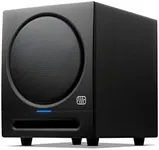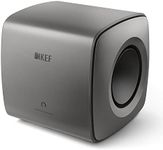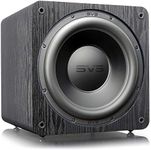We Use CookiesWe use cookies to enhance the security, performance,
functionality and for analytical and promotional activities. By continuing to browse this site you
are agreeing to our privacy policy
Best Home Subwoofers
From leading brands and best sellers available on the web.#2
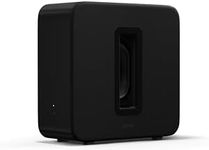
Sonos
20%OFF
Sonos Sub 4 - Wireless Subwoofer - Black
View Product
#3
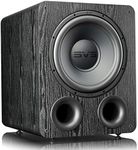
SVS
SVS PB1000 Pro Subwoofer Black Ash
View Product
#4

SVS
SVS 3000 Micro Subwoofer Piano Gloss Black
View Product
#5
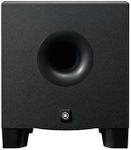
Yamaha
Yamaha HS8S - Powered subwoofer, active for producers, DJs and performers, in black
View Product
#6

Sonos
21%OFF
Sonos SUB MINI WHITE Wireless Subwoofer
View Product
#7
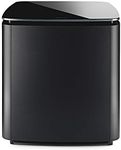
Bose
Bose Bass Module 700, Black
View Product
#8
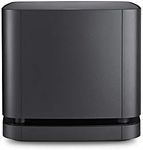
Bose
Bose Bass Module 500
View Product
#9

SVS
SVS PB-3000 Sub Woofer (Black Ash)
View Product
#10

SVS
SVS SB-2000 Pro Subwoofer (black ash)
View Product
Buying Guide for the Best Home Subwoofers
Choosing the right home subwoofer can significantly enhance your audio experience, whether you're watching movies, listening to music, or playing games. A subwoofer is designed to reproduce low-frequency sounds, adding depth and richness to your audio setup. To find the best subwoofer for your needs, it's important to understand the key specifications and how they impact performance. Here are the main specs to consider and how to choose the right one for you.Power Output (Wattage)Power output, measured in watts, indicates how much power the subwoofer can handle and how loud it can get. Higher wattage means more powerful and louder bass. For small rooms, a subwoofer with 100-300 watts is usually sufficient. Medium-sized rooms may benefit from 300-500 watts, while large rooms or home theaters might require 500 watts or more. Consider the size of your room and how much bass you want when choosing the power output.
Frequency ResponseFrequency response refers to the range of frequencies the subwoofer can reproduce, measured in Hertz (Hz). A typical subwoofer might have a frequency response of 20-200 Hz. The lower the minimum frequency, the deeper the bass. For most home setups, a subwoofer with a frequency response down to 20-30 Hz will provide deep, satisfying bass. If you enjoy very low bass, look for a subwoofer with a lower minimum frequency.
Driver SizeThe driver is the part of the subwoofer that produces sound, and its size is measured in inches. Common sizes range from 8 to 15 inches. Larger drivers can move more air, producing deeper and more powerful bass. However, they also require more space. For small to medium rooms, an 8-12 inch driver is usually adequate. Larger rooms or those seeking very deep bass might benefit from a 12-15 inch driver. Consider your room size and space availability when choosing the driver size.
Enclosure TypeSubwoofers come in different enclosure types, primarily sealed and ported. Sealed enclosures are compact and provide tight, accurate bass, making them ideal for music. Ported enclosures have a vent that enhances low-frequency output, making them louder and better for home theater. If you prioritize accuracy and space-saving, go for a sealed subwoofer. If you want more powerful bass for movies, a ported subwoofer might be better.
Connectivity OptionsConnectivity options determine how you can connect the subwoofer to your audio system. Common options include RCA inputs, speaker-level inputs, and wireless connectivity. RCA inputs are standard for most home audio systems. Speaker-level inputs are useful if your receiver lacks a dedicated subwoofer output. Wireless subwoofers offer flexibility in placement. Consider your existing equipment and how you plan to integrate the subwoofer when evaluating connectivity options.
Adjustable CrossoverAn adjustable crossover allows you to set the frequency at which the subwoofer starts to play bass sounds, blending with your main speakers. This is important for achieving a balanced sound. A typical range might be 40-160 Hz. If you have small main speakers, set the crossover higher (e.g., 80-100 Hz). For larger speakers, a lower setting (e.g., 40-60 Hz) might be better. Adjust the crossover to match your main speakers for the best sound integration.
Phase ControlPhase control helps synchronize the subwoofer with your main speakers, ensuring that the bass sounds are in phase and not canceling each other out. This can improve the overall sound quality. Some subwoofers have a simple 0/180-degree switch, while others offer variable phase control. If you experience uneven bass or want precise control, look for a subwoofer with variable phase control. Otherwise, a basic switch might suffice.
